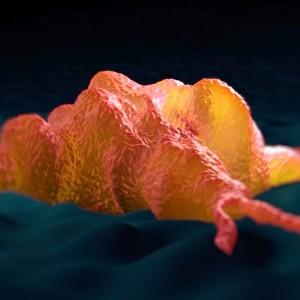 Researchers from The Wistar Institute discovered that macrophages have a crucial role in melanoma resistance to targeted therapies. The study entitled “BRAF Inhibition Stimulates Melanoma-Associated Macrophages to Drive Tumor Growth” was published in the Clinical Cancer Research by Tao Wang, first author, Meenhard Herlyn and Russel E. Kaufman, co-senior authors, from the Molecular and Cellular Oncogenesis Program at The Wistar Institute in Philadelphia, Pennsylvania, along with colleagues.
Researchers from The Wistar Institute discovered that macrophages have a crucial role in melanoma resistance to targeted therapies. The study entitled “BRAF Inhibition Stimulates Melanoma-Associated Macrophages to Drive Tumor Growth” was published in the Clinical Cancer Research by Tao Wang, first author, Meenhard Herlyn and Russel E. Kaufman, co-senior authors, from the Molecular and Cellular Oncogenesis Program at The Wistar Institute in Philadelphia, Pennsylvania, along with colleagues.
Targeted cancer therapies are drugs or other substances that inhibit the growth and spread of cancer by interfering with specific molecules, “molecular targets,” which are important for the growth, progression, and spread of cancer. These therapies have been accepted and attributed as a possible “cure” for a variety of cancers, and a suitable alternative to chemotherapy, since they target gene mutations responsible for cancer without affecting healthy or non-mutated cells.
In melanoma, the most frequent mutation is in the BRAF gene, a component of the mitogen-activated protein kinase (MAPK) pathway — a key regulator of cell cycle progression. Among others, the most frequent BRAF mutation in almost 90% of cases is represented by a substitution of the amino acid valine with glutamic acid at position 600 (V600E). The mutated BRAFV600E/K appears to be a suitable potential target for cancer therapy.
Dr. Russel E. Kaufman said in a news release that he and his fellow researchers thought that targeted therapies would be the ‘magic bullet’ for cancer therapy, but with time they realized that this was not the case with BRAF inhibitors for melanoma therapy.
Dr. Kaufman stated that they had to analyze the tumor microenvironment since it could give a possible explanation to tumor resistance to targeted therapy and chose better therapy strategies to achieve more efficient treatments.
The research team focused their study on macrophages, a type of white blood cell that engulfs and digests cellular debris, foreign substances, pathogens, and cancer cells by a process named phagocytosis. In melanomas, macrophages are the most abundant inflammatory cell found in the tumor microenvironment and their presence is associated negatively with patient outcome during all stages of the disease. Melanoma-associated macrophages have been associated with cancer development but their role in resistance to BRAF inhibitors had not been well described. They used an in vitro co-culture system with macrophage and melanoma cells to investigate if macrophages played a role in melanoma resistance to BRAF inhibitors (BRAFi). The effects of macrophages in tumor resistance were analyzed by proliferation assay, cell death assay, and Western blot. In addition, 3 mouse models were used to evaluate if macrophages targeting could increase the antitumor activity of BRAFi.
The researchers found that BRAF inhibitors activated the mitogen-activated protein kinase (MAPK) pathway in macrophages. The activation of receptors on the cell surface and in the cytoplasm activates the mitogen-activated protein kinase (MAPK) that ultimately will induce the production of proteins. In this particular situation, the activation of the pathway led to the production of vascular endothelial growth factor (VEGF), a signaling protein linked with tumor growth by inducing the formation of blood vessels necessary for tumor survival and growth. Consecutively, VEGF produced by macrophages activated the MAPK pathway in melanoma cells stimulating the growth of cancer cells. After these findings, the research team inhibited the MAPK pathway or VEGF signaling that reverted macrophage-mediated resistance. Moreover, targeting macrophages increased the anti-tumor activity of BRAFi in mouse and human tumor models. The presence of macrophages in melanomas was a prognostic factor for early relapse after therapy.
Dr. Kaufman said these findings highlighted the importance of inhibitors’ off-target effects on patients. “With this piece of information, we have determined just how important one of these off-target effects can be, and from here, we can decide whether the right approach is to target the macrophages themselves or to design new BRAF-inhibiting drugs that do not activate macrophages.”


